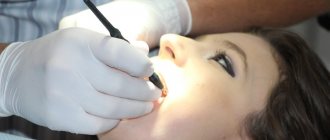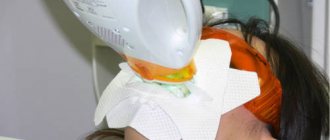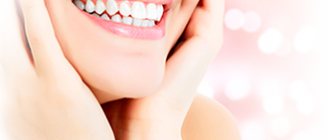Teeth whitening in childhood – how safe and justified?
When a child’s tooth enamel begins to darken, this may indicate insufficient oral hygiene or the development of a dental disease. But teeth can change color for other reasons beyond our control, for example, as a result of genetic predisposition. Due to such circumstances, the child may develop psychological complexes and self-doubt. Therefore, some parents have a completely reasonable question: is it possible to whiten children’s teeth and how safe is it? You will find answers to these and other questions later in this article.
Is it possible to whiten teeth as a child?
Causes of darkening and yellowing of teeth
The main reasons why young patients develop stains on their teeth:
- Development of caries;
- The diet is dominated by carbohydrates;
- Lack of calcium;
- The use of medications that affect the staining of tooth enamel;
- Endocrine changes.
In some cases, it is impossible to restore the enamel to its original appearance. But often a few visits to the dentist are enough for the child’s smile to become healthy and snow-white again.
Why does a child's teeth darken?
Tooth enamel can darken for various reasons. At the same time, it can noticeably turn yellow or even turn light brown. Of course, this state of affairs can negatively affect not only oral health, but also the psychological state of the child. So why does enamel change color? Here are some common reasons for this unpleasant phenomenon:
- uncontrolled consumption of sweets and fast carbohydrates: foods high in sugar are the most common cause of the development of caries in childhood1. They contribute to the formation of a bacterial film on the surface of the enamel, which very quickly turns into hard dental deposits. All this leads to its inevitable darkening,
Caries leads to discoloration of teeth - constant consumption of food with pigments: this includes coloring drinks such as tea, coffee, sweet soda with dyes. The latter not only contribute to a change in the color of the enamel, but also lead to the gradual destruction of dental tissues, since the composition of such liquids contains too many sugars and acids,
- genetics: according to experts, quite often dark enamel becomes a consequence of genetic predisposition, and then dealing with the problem becomes much more difficult,
- tooth injury: the presence of microcracks, scratches, chips, carious plaque and dental deposits on the enamel - all these factors have a direct impact on the condition and, accordingly, the color of the enamel.
“When my child’s teeth became very dark, I immediately decided that he wasn’t brushing. I started urging him to brush his teeth in front of me every morning and evening before bed. I excluded sugar and flour from my diet, of course, as much as possible. But nothing helped. And only at the dentist’s appointment it turned out that it was all a matter of genetics. The teeth themselves are very susceptible to caries, and even dark. We were booked in for professional cleaning, but were told to hold off on bleaching. Such procedures are not performed on children, so they will have to wait until they reach adulthood.”
Alyonka_33, Omsk, from correspondence on the woman.ru forum
Keep in mind that if there is even the slightest damage to tooth enamel, it is prohibited to use any whitening methods, especially at home. Otherwise, the aggressive effects of whitening agents may even lead to complete destruction of the outer protective layer of the teeth. Therefore, before carrying out such a procedure, it is imperative to consult with a specialist.
Important! As for children, it is generally not allowed to use any methods of lightening enamel without the permission of the dentist. Therefore, the answer to the question “is it possible to whiten teeth in childhood” will, on the one hand, be categorical (the use of chemicals is prohibited), but, on the other hand, it will be positive – there is a professional cleaning method.
Does teeth whitening hurt?
The teeth whitening procedure itself in Krasnoyarsk is carried out with comfort. The patient does not feel pain or any discomfort. This is not a treatment where the doctor acts on the tooth tissue. Here you just need to apply a special gel to the enamel and dry it under the light of a lamp or simply leave it for a while.
After the procedure, a short-term increase in sensitivity is possible, which will pass very soon.
If you can't decide whether to have teeth whitening, schedule a consultation. The doctor will answer all questions and advise the best way to improve the aesthetics of your smile. Please note that the procedure has contraindications. In addition, the doctor can immediately understand in which cases teeth whitening will not work - they will immediately warn you about this. There are alternative ways to influence the shade of the enamel, such as veneers, whitening pencils, strips or trays.
Each patient has his own parameters and characteristics - that’s why we always talk about the importance of consultation before teeth whitening and other procedures. Any materials on the Internet may be used for informational purposes only.
Professional hygiene complex - an option on how to make children's tooth enamel lighter
So, is it possible to whiten a child’s teeth and how to do it without damaging the fragile enamel? In fact, what we usually mean by bleaching, that is, the use of aggressive chemicals, is contraindicated in children. This raises a logical question: at what age can one begin to carry out such procedures? In dental centers, this type of service is offered to patients only from 15-16 years of age, and in some situations even from 18 years of age. However, there is another, alternative option - regular, but very high-quality teeth cleaning. Let's look at this method.
So, in addition to classic whitening (photo, chemical or laser), modern dentistry offers the opportunity to steal electrical energy to clean the enamel of plaque and plaque in a gentle way. Using hardware techniques, you can lighten your teeth a couple of shades, but if the cause of dark enamel is genetics, this method is unlikely to make it noticeably lighter. On the other hand, this is not just effective, but mandatory prevention of caries development, which is carried out for children starting from 7-8 years old and even younger. When a very young patient finds himself in the dental chair, he may be offered gentle manual cleaning.
In childhood, only gentle brushing of teeth is allowed.
Cleaning using the Air Flow device has become widespread today. In this case, we are not talking about an aggressive chemical effect, but about high-quality cleansing of the enamel from bacteria and accumulations of food debris. The device works as follows: compressed air is supplied to the tip under high pressure along with baking soda. Treatment of the surface of the teeth with a powerful jet allows you to clean even the most inaccessible places. In order to give the effect of freshness, essential oil or lemon essence is often added to the mixture.
On a note! Ultrasonic cleaning before the age of 5-7 years is also prohibited. Air Flo cannot be used if the child has a hypersensitivity to citrus fruits or mint - there is a high risk of developing an allergic reaction.
Types of in-office whitening
Photobleaching
A gel is applied to the teeth, which is activated by light from a halogen or ultraviolet lamp. The gel contains peroxide, which decomposes into water and oxygen. It is thanks to the effect of oxygen that dark pigments from tooth tissue are discolored, creating a whitening effect.
Pros:
- high efficiency;
- quickly achieving the desired result;
- safety;
- painlessness.
Flaws:
- relatively high cost.
Chemical bleaching
The essence of the procedure is to apply two mixed gels to the surface of the teeth. As a result, a chemical reaction occurs that leads to discoloration of dark pigment spots in the dental tissues. The concentration of active substances is higher than with other types of whitening, which can cause a temporary increase in tooth sensitivity.
Pros:
- safety;
- high whitening speed.
Minuses:
- dental hypersensitivity is present for 1-2 days;
- the whiteness effect is not as pronounced as with photobleaching.
The Saint-Dent Clinic in Moscow provides all types of dental treatment. American and European equipment is used in their work; doctors have extensive experience and regularly improve their knowledge and skills through courses in the best foreign dental centers. You can find the clinic's contacts here. The section with current prices is posted here
Why classic whitening is not performed in childhood
So what’s wrong with classic professional whitening and why aren’t similar procedures performed in children? The thing is that a child’s tooth enamel is characterized by increased fragility and susceptibility to any kind of external irritants. And traditional methods of lightening it precisely involve a rather aggressive effect on the surface of the teeth. Here are some good reasons that do not allow you to whiten children's enamel even in the dentist's office:
- thinning of the enamel: as a result of exposure to chemicals, ultraviolet radiation or laser, the density of the enamel is noticeably reduced and its structure is disrupted. When it comes to a child, the protective layer of the teeth may not be able to withstand it at all. As a result, the risk of developing caries and other dental diseases greatly increases,
- demineralization: during the procedure, rapid destruction of minerals is observed, and this, in turn, greatly weakens the teeth. Even adult patients after whitening are recommended to undergo a remineralization procedure,
- increased enamel sensitivity: teeth begin to react sharply to hot and cold, as well as to acidic foods, and this is an obvious drawback of professional whitening. The enamel becomes much thinner, which significantly increases the likelihood of problems with teeth and enamel pigmentation in particular.
- risk of burns: using ultraviolet light to lighten tooth enamel can cause a serious burn on the mucous membrane. At the same time, dental tissues also suffer greatly from heating.
Aggressive whitening can lead to thinning and demineralization of the enamel.
Obviously, the only option to make the enamel of children's teeth a little lighter is to schedule a professional cleaning at the dentist's office. If we are talking about a child, then this is the safest and preferable option, which allows you to make the enamel a couple of tones lighter. And remember: independent attempts to lighten children’s teeth using folk remedies are fraught with serious problems, including complete destruction of the enamel. This kind of procedure is best left to professionals.
- According to WHO research results.
How does whitening work?
We use several systems that differ slightly in the technique of implementation and the composition of the whitening gel. How whitening occurs and how long the procedure takes depends on the chosen system.
For example, the latest development, Philips Zoom QuickPro, is the fastest procedure that does not require exposure to light. The doctor only needs to apply a gel to the enamel, which the patient must wipe off with a napkin or toothbrush after half an hour.
Another well-known lampless system is Opalescence. We also offer teeth whitening using Zoom or Klox technologies, where each stage of applying the gel is fixed with lamp light.
Any of these methods takes no more than an hour and does not involve a recovery period. You just need to avoid eating and drinking for 2-3 hours after the procedure.
Treatment of caries in children
We can cure caries at the spot stage without drilling - with the help of restorative drugs.
With medium and deep lesions, alas, it is impossible to do without eliminating the lesions. Don’t worry - we have experienced dentists who know how to make friends with children and adapt them to treatment. For children with negative experiences with dental treatment, we will provide an adaptive appointment. During it we will show and talk about our equipment and tools in a playful way, and carry out professional hygiene.
We will use safe application anesthesia (Lidocaine, Lidoxor) before administering invasive anesthesia, so the child will not feel any discomfort.
We will restore teeth using high-quality filling materials (glass ionomer cements, light-curing composites).
Which cosmetics to choose?
The priority is safety. If a woman is used to choosing cosmetics for herself empirically, this method is not suitable for children. You need to learn to understand the composition of each product. Knowledge of harmful components will help protect your child from allergies, irritation, intoxication, and indelible stains.
Children's cosmetic products should not contain:
• Parabens, benzophenones. If the composition contains Propylparaben, Isopropylparaben, Benzylparaben, Benzophenone, the product cannot be purchased. • Boric acid, iodopropynylbutylcarbamate (IPBC). Substances are not allowed to be added to products for children under 3 years of age.
It is highly undesirable to have:
• lauryl, sodium laureth sulfate (sodium lauryl-, laureth sulfate) - surfactants; • emulsifiers and foaming agents, which are hidden under the abbreviations MEA, DEA, TEA; • polyethylene glycol (PEG/PPG) in an amount >10%; • petroleum products - petrolatum, crystalline paraffin; • lanolin; • bentonite – clay; • mineral oil (MINERAL OIL); • triclosan (triclosan); • preservative phenoexitanol (phenoxyethanol).
Cosmetic and hygiene products that are safe for children are made from herbal extracts, vegetable oils, and thermal water.
Cream or lipstick for a young fashionista may contain the following substances:
• jojoba, shea or coconut oil; • glycerin; • isododecane - solvent; • vitamins A and E; • extract of calendula, chamomile or aloe vera.
Dyes must be natural. The sunscreen milk contains a harmless amount of zinc oxide and titanium dioxide.
Benefits and harms
Aggressive cosmetics for adults containing dangerous ingredients can harm a child’s health. Surfactants “eat” the lipid layer, drying out and thinning the skin. Petroleum products accumulate in the body and cause poisoning. Mineral oils, bentonite, lanolin “clog” pores, preventing the skin from breathing, triclosan destroys biofilm - the protective layer of the skin, phenoexitanol is toxic to children. Products from the “adult” series are designed for skin tissues with a sufficient content of fat, enzymes, and acids, so they cause irritation and allergic reactions in children.
The benefits of decorative cosmetics are more psychological. The girl has her own cosmetic bag, with makeup she feels beautiful, confident, even grown up. In adolescence, makeup helps to win the sympathy of the opposite sex.
To mitigate the risks of unwanted reactions, it is recommended to adhere to three rules:
• Carry out allergy tests. Apply the product to the inside of the elbow for 10-15 minutes. A marker of safety will be the absence of redness, rashes, and itching. • Remove makeup before going to bed. It is best to use hypoallergenic foam for washing. • Do not overuse. No matter how old a girl is, it is recommended to wear makeup only on holidays.
It is advisable for teenage girls to visit a cosmetologist before using decorative cosmetics for the first time. Dermatological problems begin at puberty. The doctor will determine your skin type and recommend skin care products.
The advantages of using hygienic, protective, and medicinal cosmetics are healthy skin, hair, and nails. Products from brands that carefully monitor the quality and safety of products - Johnson's Baby, Weleda, Mir Detstva, Nasha Mama, Sanosan - help you care for your baby. Two Russian brands have united under the name Happy Moments - “Drakosha” and “Little Fairy”.
Preparing for the whitening procedure
Do not underestimate the importance of the preparatory stage, which must necessarily precede the lightening procedure. It is very important because it allows you to:
- ensure safety and eliminate the risk of pain;
- achieve maximum aesthetic effect.
Preparatory activities include the following dental procedures:
- Sanitation of the oral cavity is the identification and elimination of any pathological processes in the oral cavity: from the treatment of caries to the improvement of gums. This is the competence of the Edkar dentist-therapist.
- Professional teeth cleaning, including remineralization therapy, which will strengthen the enamel and reduce its sensitivity. This hygiene procedure is performed by our hygienist.
Only after all of the above procedures can you begin teeth whitening.
What cosmetics does a child need?
Children's products include cosmetics from 0 to 14 years. According to their purpose, they are hygienic (caring), protective, medicinal, and decorative. How many goods does a child need? Parents decide until the child “grows” with his taste preferences. Modern hygiene products for babies and children's cosmetics can be divided into several categories.
Caring cosmetics include: • soap, shower gel, shampoo, toothpaste; • baby bathing products, powder, wet wipes; • oils, creams, lotions.
The category of protective products includes: • repellents in the form of cream; • hygienic lipsticks, lip balms; • sunscreen milk with SPF index 20-60.
To create make-up, girls need: • foundation; • Mascara; • lip gloss or lipstick.
Cosmetics with a therapeutic effect are: • dermatological creams (ointments); • anti-acne lotions for teenagers.
Children's nail polishes and perfumes deserve attention. Girls' nail plates are thin, elastic, with soft cuticles. Therefore, you need to use varnishes based on fruit resins that do not contain aggressive substances. Perfume for young fashionistas should not sound “grown-up” or contain a large percentage of alcohol or toxic fragrances.
Until what age is it advisable to perform the procedure?
Around the age of 45-50, most people develop age-related presbyopia (farsightedness).
This is due to age-related thickening of the lens , which becomes increasingly difficult to adapt to optical conditions; in addition, the muscles that hold it weaken and the eye loses the ability to accommodate and focus.
As a result of laser correction, presbyopia can be eliminated, but in this case the eye will still not be able to focus correctly due to atrophic processes in the lens and muscles.
Know! And if before the operation a person sees well, at least in the distance, then after the intervention and achievement of conditional one hundred percent vision, the range of his vision will be limited to a certain distance.
For these reasons, experts do not recommend performing such operations over the age of 55 , and starting from 45 years, such interventions are performed after a thorough diagnosis and for serious indications.











